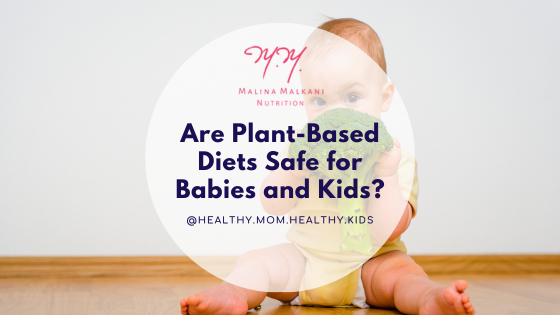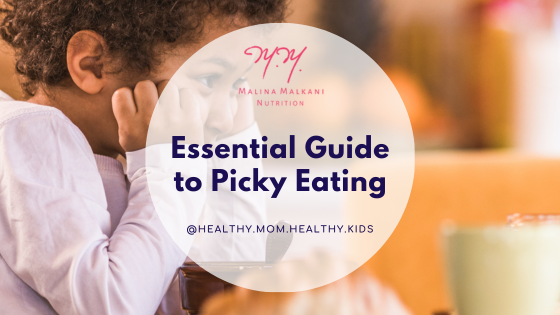How Much Protein Does My Child Need?
Protein is an essential nutrient for children, playing a crucial role in their growth and development. Many of the parents and caregivers I work with in my private practice are concerned about their children’s protein intake, and understanding the protein requirements for children can be helpful when they have questions or concerns about adequate protein intake.
Our culture places a lot of emphasis on protein these days, but most kids can easily meet their daily needs for protein by eating a balanced diet.
In this post, we’ll cover what protein is, why protein is important, how to calculate your child’s protein needs, how to build protein-rich foods into a child’s diet, and the protein requirements for different age groups. I’ll also answer common questions like, “Can you get too much protein?” and “Can I give my child a protein shake?” Let’s get started!
What is protein?
Protein is a macronutrient that is essential for the growth, repair, and maintenance of tissues in the body. It is made up of smaller units called amino acids, which are often referred to as the building blocks of protein.
There are 20 different amino acids, nine of which are considered essential because the body cannot produce them on its own, and they must be obtained from the diet.
It is important to note that most animal proteins are considered “complete” because they contain all nine essential amino acids, whereas many plant-based protein sources are considered “incomplete” because they usually don’t contain all nine (except for soy products, quinoa, amaranth, and buckwheat).
Proteins play many important roles in the body, including:
Building and repairing tissues like muscles, organs, skin, hair, and nails
Maintaining enzyme function for digestion, metabolism, and other biological processes
Producing hormones, such as insulin and growth hormone, that regulate various processes in the body
Creating antibodies that help the body fight off infections and diseases
Helping transport molecules, such as oxygen in the blood (as hemoglobin), and store certain nutrients, such as iron (as ferritin)
Stabilizing blood sugar by slowing the release of glucose into the bloodstream
Adequate protein intake is important to support these essential functions. The recommended daily intake of protein varies depending on factors such as age, sex, and activity level; however, in general, it is recommended that protein make up about 10-30% of total daily caloric intake.
How do I calculate protein requirements for my child?
In general, most children can meet their protein needs by consuming a balanced diet that includes a variety of protein sources. However, if you are interested in learning more about your child’s protein needs, there is an easy formula to follow:
Daily protein needs = ½ gram protein per pound body weight
For example, a 5-year-old child who weighs about 40 lbs would need about 20 grams of protein per day (40 divided by 2).
What are the protein requirements for different age groups?
The protein requirements for children vary depending on their age, weight, and stage of development. Listed below is a general guideline for protein requirements for different age groups.
It is sometimes easier to think about protein for kids in 1-ounce equivalents; for example, one slice of deli meat, one egg, 12 almonds, one tablespoon of nut butter, or ¼ cup of beans are all one-ounce equivalent servings of protein.
Recommended Dietary Allowance (RDA) for Protein:
Toddlers (1-3 years): ~13 grams of protein per day or 2-ounce equivalents
Preschoolers (4-8 years): ~19 grams of protein per day or 4-ounce equivalents
School-age children (9-13 years): ~34 grams of protein per day or 5-ounce equivalents
Adolescents (14-18 years): ~46-52 grams of protein per day or 5 to 6.5-ounce equivalents (depending on their gender and level of physical activity)
It's important to note that these are general guidelines, and individual protein requirements may vary based on factors such as activity level, growth rate, and overall health status.
Protein deficiency is rare in Western countries but still possible. If your child eats a plant-based diet, is a picky eater, and/or avoids dairy, soy, and legumes, getting the appropriate daily protein recommendations may be challenging.
If you are worried your child is not getting enough protein, it's best to consult a healthcare provider or a registered dietitian who can help assess the need for additional protein and figure out ways to build good sources of protein that your child enjoys in their diet.
High Protein Foods for Kids
For kids, it's important to choose a variety of high-protein foods to maintain a balance of nutrients. By including multiple high-protein foods in your child's meals and snacks, you can help ensure that they are getting enough protein to support their growth and development.
Here are some of the best high-protein foods for kids:
Lean meats: Chicken, turkey, and lean cuts of beef or pork
Fish: Especially fatty fish like salmon, tuna, and mackerel
Eggs: Eggs are a versatile protein source that can be prepared in many ways, such as scrambled, boiled, or made into egg bites or a frittata
Dairy products: Milk, yogurt, and cheese are all good sources of protein (Greek yogurt is particularly high in protein and can be topped with fruit or granola for a tasty breakfast or snack)
Legumes: Beans, lentils, and chickpeas are all high in protein and can be included in soups, stews, or salads
Nuts and seeds: Almonds, peanuts, and sunflower seeds are delicious on their own or can be spread on toast as nut butter or used as a dip for fruits or vegetables
Whole grains: Quinoa, brown rice, and whole wheat bread or pasta are delicious in stir-fries, casseroles, and salads
Tofu and tempeh: These plant-based soy protein sources can be added to stir-fries, soups, sandwiches and wraps
Can a plant-based diet support a child’s daily protein needs?
According to the Academy of Nutrition and Dietetics, a well-planned vegan or vegetarian diet can provide all the nutrients needed at any stage of the lifecycle.
In order to get adequate protein while eating a plant-based diet, build meals around plant-based foods that contain protein and are rich in nutrients. The best plant-based protein sources are tofu/tempeh, beans and lentils, and nuts/nut butter.
When choosing a milk alternative for your child, it is best to offer plain, unsweetened fortified soy milk. It is minimally processed and has a high-quality, digestible complete protein, unlike most other plant-based milks. If you would like to read more, check out my e-guide on choosing milk products.
Can my child get too much protein?
Yes, a child can consume too much protein. While protein is essential for growth and development, excessive protein intake can have negative effects on health, especially in children.
High protein intake can strain the kidneys, as they have to work harder to remove the waste products of protein metabolism. A diet that is too high in protein may also lead to deficiencies in other important nutrients if it displaces other food groups from the diet.
Signs of excess protein intake in children may include stomach aches, dehydration, nausea, diarrhea, fatigue, headaches, and possible seizures.
Can my child drink protein shakes or use protein powder?
Children generally do not need to consume protein shakes or use protein powder. Most children can meet their protein needs through a balanced diet, and it’s best to focus on providing a balanced diet rich in whole foods.
Protein supplements, shakes, powders, and bars are often marketed as a convenient way to increase protein intake, but they are not usually the healthiest option and may contribute to excessive protein intake. Many contain added sugars, artificial sweeteners, and other additives that may not be ideal for children's health.
In some cases, a pediatrician or dietitian may recommend a protein powder if the child has a medical need requiring higher protein intake or is not receiving enough protein through the diet.
If you are looking for more personalized guidance regarding your child’s specific protein requirements and dietary preferences, I am accepting new patients in my virtual practice and would love to meet with you.
And if you have a picky eater, check out my FREE guide to reducing picky eating or enroll in my online course, Solve Picky Eating, which includes 12 self-paced short video lessons, downloadable guides, and checklists to support you along your journey of navigating picky eating.
Thanks for reading!









